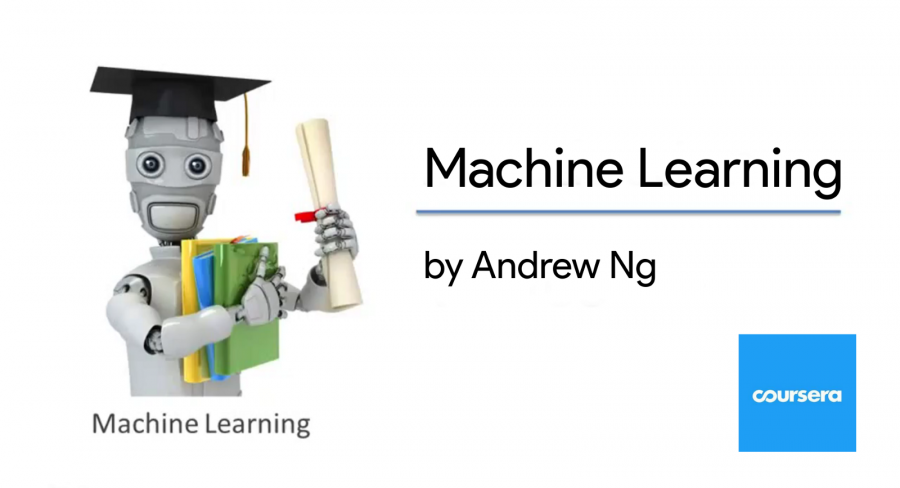
Andrew Ng’s Machine Learning Stanford course is one of the most well-known and comprehensive introduction courses on data science. This class is mostly focused on theory, with simple application exercises to bring everything together. It may be the most well-known course on machine learning on the web.

Skills you’ll develop
“Machine Learning” Stanford course offers a great balance of theory, math, as well as an often-overlooked aspect of machine learning, how to tune the learning algorithm based on the data you have.
Many courses only show simple examples that are proven to work correctly for a given dataset, e.g., MNIST digit recognition using deep learning. Andrew Ng’s Machine Learning course will show you how to determine when to gather more examples or features, or when to increase the complexity of the algorithm. Learning this important concept will prevent you from wasting countless hours working in the wrong direction.
Requirements
The requirements for this course are quite low, however, to get the full value off this course, it is recommended to be a little more comfortable than the bare minimum requirements. It is required to have a base understanding of calculus (finding min/max from derivatives) and linear algebra (dot product, transpose, inverses).
However, since many machine learning concepts are based on heavy linear algebra, calculus, and optimization concepts, you will get a lot more from the course if you have solid mathematical bases.
As for the programming, this course uses MATLAB for practical examples, which is similar in syntax to other high-level languages like Python or R. Even through MATLAB is simple in terms of syntax, it may be hard to complete some of the exercises if you have no prior knowledge of programming. This being said, the focus of the course is more on the concepts and less on the programming.
Contents of the course
The course starts in a pretty straightforward manner, teaching linear and logistic algebra. Those are some of the most well-known and easy to understand concepts. Instead of moving to other well-known algorithms, like K-nearest-neighbors, or decision trees, the next big concept being thought is neural networks. This seems like a big step.
However, it is a quite logical progression, since each neuron of a neural network can be thought of as a linear or logistic regression model. This is probably the toughest subject in the curriculum, but one of the most well thought. During this week, you will learn about back and forward propagation, which is an optimization procedure to find the weights of the network. You will then implement a simple network without any external libraries, which is a good step in the direction of mastering Deep Learning.
The following topic is one of my favorites, because of its importance in resolving real-life problems. You will learn what to try next when your learning algorithm doesn’t perform as well as you originally thought it should. This is a widespread problem where a lot of time can be spent collecting data that will leave you with the same accuracy. This is at the heart of the bias-variance trade-off which will also be thought in detail during this week.
After a quick overview of Support Vector Machine, the course moves to unsupervised learning. It will start by talking about the motivations behind unsupervised learning with the example of data compression. Using this example and others, Andrew Ng will explain Principal Component Analysis, an algorithm to find a certain number of dimensions that have the highest possible variance. The next unsupervised algorithm being learned is anomaly detection, which is used to detect data points which deviate significantly from the rest. This can be used to automate the process of product verification, based on their size, temperature or other measurements at the end of the assembly line.
The final two weeks are spent wrapping everything together, talking about different optimization algorithms, like stochastic gradient descent or batch gradient descent and their merits when working with large datasets. Finally, you will learn how to take every concept learned throughout the course and created a machine learning pipeline.
Certification and cost
Andrew Ng’s Machine Learning Stanford course is either free or around $100, depending if want the official certificate or not. The certificate displays your name, the name of the school offering the course, Stanford Online in this case and the name of the course. The certification can be a great addition to your resume, especially if you are applying to junior level jobs and/or you don’t have a math or computer science background. The full material of the course can also be consumed free of charge.
Final thoughts
Overall, this is one of the most popular machine learning classes, and it surely did not disappoint. It is well thought, and its content is different enough from most other classes to keep the content fresh and new.